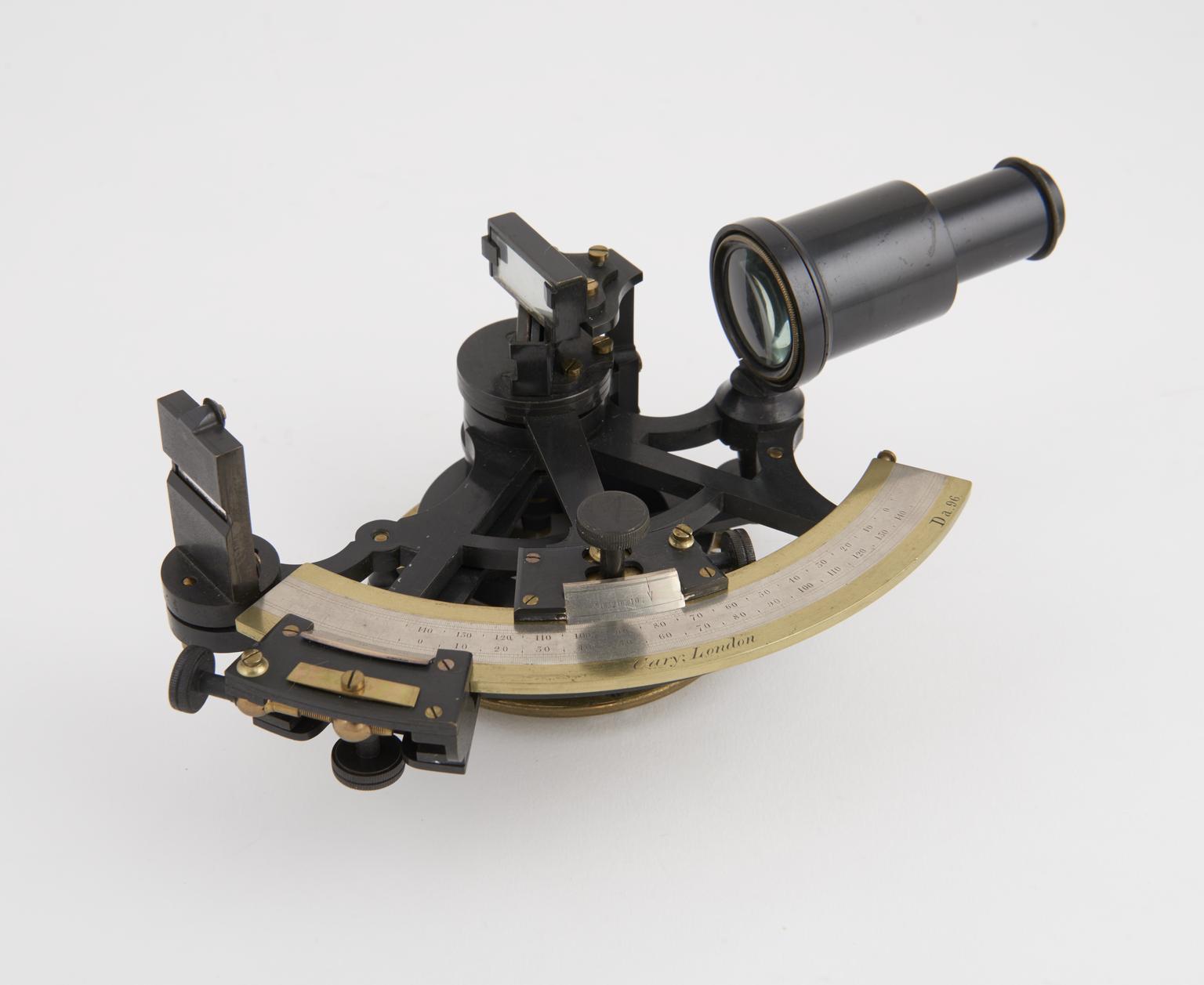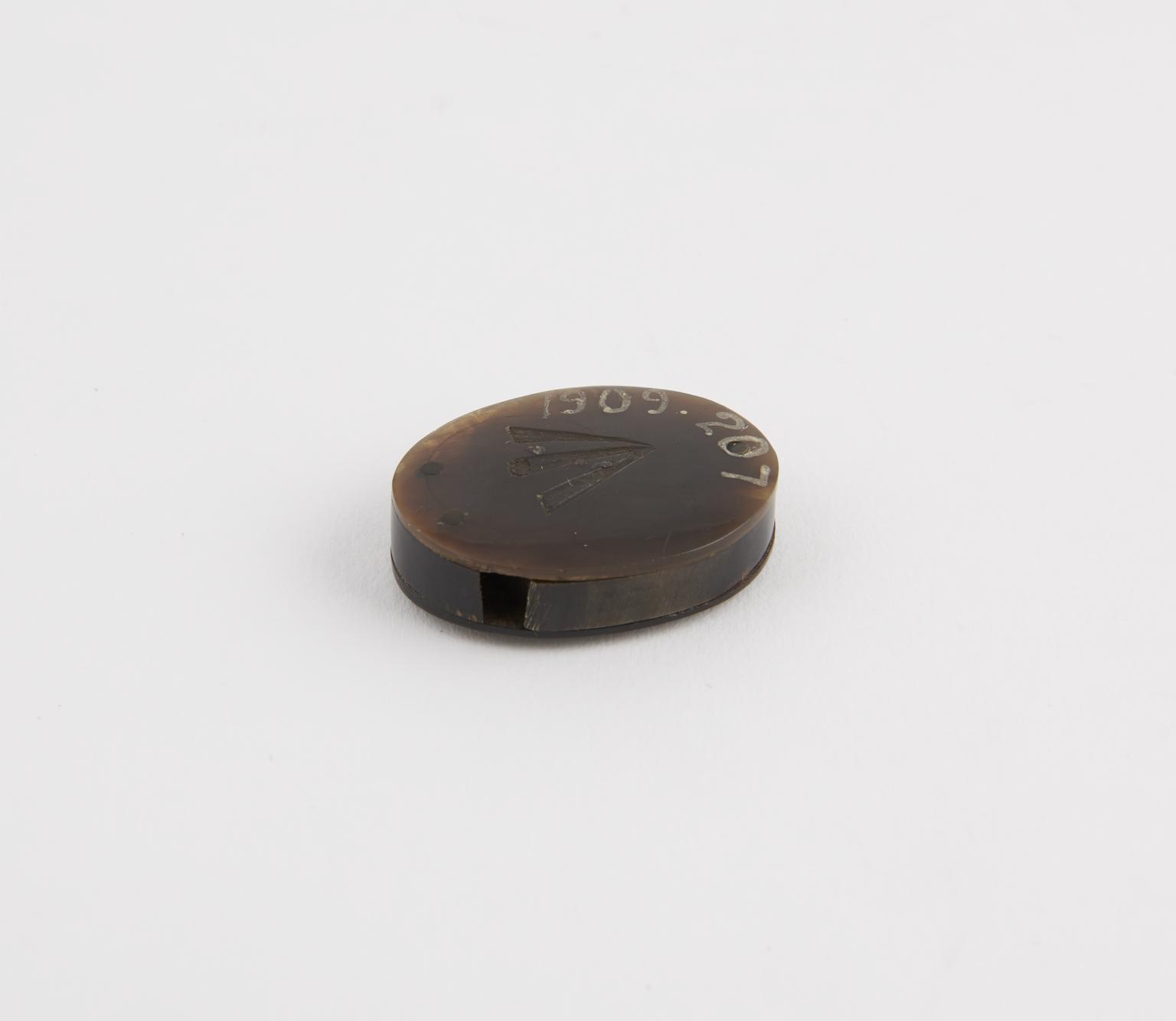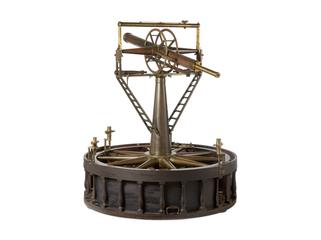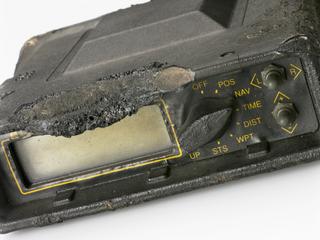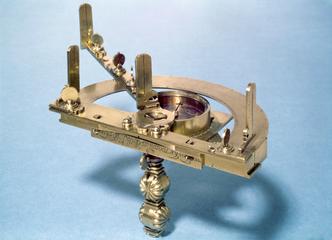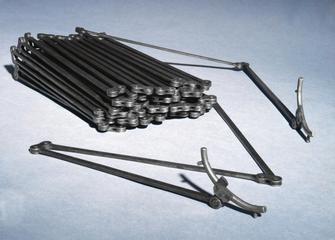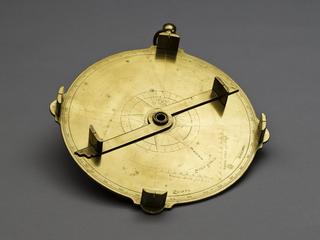Double sounding quintant
Double sounding quintant invented by Rear-Admiral Frederick Beechey, and made by William Cary, London, about 1847. Anodized brass frame, polished brass limb, a circular brass handle. Signed on the limb: Cary, London. Marked on the limb: Da.96. Inlaid silver scale with two graduations, the lower from the left from -35° to 165° every 30', measuring to 145°; the upper, from the right, from -15° to 155°, measuring to 158°. Two silver verniers to 1'; zero at the left (lower) and at the right (upper). The lower tangent screw and clamping screw are on the back of the index arm, which is on the back of the frame; the upper tangent screw is on the back of the index arm, the clamping screw is on the front. No shades. Two index glasses, adjustment by screws, one horizon glass with two silvered portions and clear glass in between; adjustment by a screw and a capstan screw. Threaded telescope bracket; perpendicular adjustment by rising-piece. Telescope (70 mm) erect image. No box.
- Measurements:
-
overall: 75 mm x 186 mm x 120 mm, .785 kg
- Materials:
- brass (copper, zinc alloy) , platinum (metal) and glass
- Object Number:
- 1909-207/1
- type:
- sounding quintant and double quintant
- Image ©
- The Board of Trustees of the Science Museum
